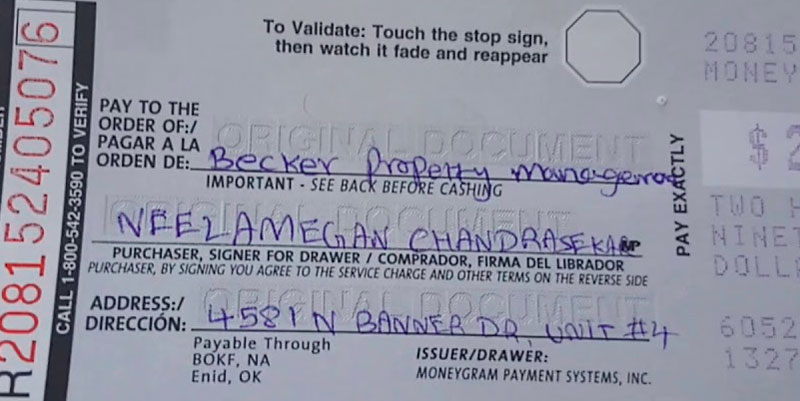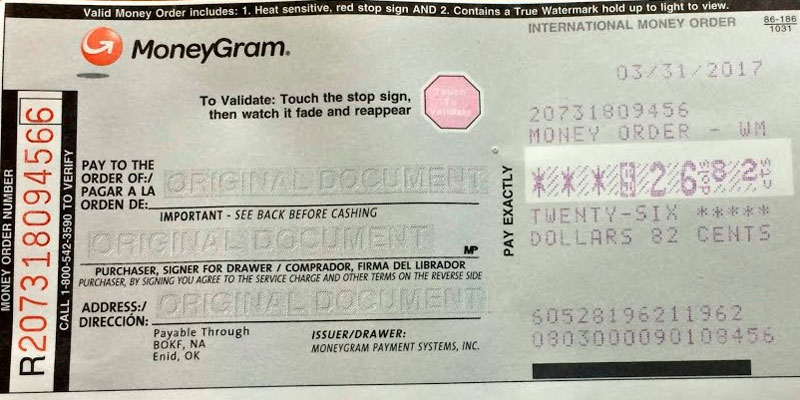Money Order Instructions
Secure and convenient money orders Instructions provide an alternative to handing over cash, writing a check, or using a credit card when making a purchase. Money orders function similarly to checks. However, they cannot be returned if paid for in advance.
If you want your money order to be honoured and not returned, you must know how to fill it out properly.
Items Required To Complete A Cashier's Check Or Money Order
Filling out a money order can differ depending on where you plan to use it, such as through Western Union or the United States Postal Service. A money order from one bank may look slightly different from one from another. For the most part, here is everything you'll need to submit a money order
Instructions for writing a check or money order
Include the recipient's name here.
Indicate who the money order is meant for in the "pay to" or "pay to the order of" section. Any given name or company name will do. Use legible ink to print the name.
As this will be the only individual allowed to cash or deposit the money order, you must fill out this area as soon as possible after purchasing the money order. Without a payee's name on the order, the money order is vulnerable to fraud because someone else may forge their name on it if it goes missing. Place your name in the "from," "buyer," or "sender" area if prompted to do so.
Make sure to fill out the buyer's area with your address.
Locate the money order section requesting the buyer's address and fill it out with your information. The payee's address could be entered in a separate field.
Write the account or order number in the note box.
The money order's memo line lets you specify its intended use. The memo could note that the money goes toward a certain debt or purchase. The memo area is also where you should enter the payee's account or order number if you have it. Rather than a note line, some money orders may have a payment for or account number written on them.
Put your name down in the buyer's signature box.

Put your signature on the money order's front, where it says to. Signature of Buyer, Buyer, From, Signer or Drawer are all acceptable titles for this section. Money orders need the payee to endorse them, but you should wait to sign the back.
Save your receipts!
If you need to verify that the intended recipient cashed the money order, you can use the tracking number on the receipt you received. Reissuing a money order with the tracking number is possible in case it is misplaced or stolen. You are getting a new money order processed could cost you.
Additionally, you can use the receipt to cancel the money order if your circumstances change.
Money order instructions
Any place that accepts cash or debit cards can sell you a money order, including banks, credit unions, check cashing services, the USPS, supermarkets, and even warehouse clubs.
Never use a credit card to buy a money order since doing so could result in high costs from your card issuer because they will treat the transaction as a cash advance. Credit cards are not a valid form of payment with some providers.
The maximum amount of money orders you can buy could be restricted. If you're mailing something within the United States, you can acquire money orders through the Postal Service with a maximum face value of $1,000. Money orders often include an additional cost of $1 to $10 on top of the purchase price.
Spending cash via money order
Money orders might be a convenient alternative to cash or personal cheques when making a major purchase, paying off debt, or making a substantial payment.
Prepaid checks are a reliable paper solution for people who wish to avoid payment bounces. Money orders can be bought with cash or other methods that don't involve a bank account.
Money orders are a great option to consider when you need to or would rather transfer cash through the mail. No sensitive financial data is included, ensuring that no one's personal information will be compromised. In addition, just like a check, the intended recipient can only cash a money order.
In conclusion
Sending and receiving money via money order has its advantages. Payment cards are generally accepted, never expire, and can usually be replaced if lost or stolen.
Prepaid money orders are a safe alternative to writing checks for online purchases, settling debts, or sending money over state lines. To avoid having your money order returned, please fill out all sections completely and legibly.










